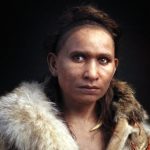Ethnicity and genes
If individuals can be genetically assigned to specific populations based solely on their genes, is ethnicity also determined by genes? The answer is NO. Ethnicity is not about the genes. Ethnic groups are socio-cultural entities, which are generated in social encounters through self-identification and ascription by the others. In other words, they are about identities, social boundaries. Furthermore, ethnic groups are not stable but constantly created through encounters with the surrounding world; one individual has numerous identities depending on the socio-cultural situation they are participating in, and likewise, societies are often multi- or poly-ethnic. Therefore, ethnic affiliations are also prone to change through time – ethnicities a century ago were most likely quite different from those of today.
Obviously, genes DO NOT define such divisions. The relevance of genes is biological: they determine things like the color of our eyes, metabolic traits, susceptibilities to some diseases and so on, but they do not make you to speak a certain language or like specific genre of music. Moreover, genes cannot be assigned to a ranking order. A variant that renders an individual to be lactose tolerant is no better or worse than the ancestral version of that gene – the one that makes people intolerant to milk sugar in adulthood. The “usefulness” of this variant depends on the circumstances: is milk included in the diet or not?

As with ethnicity, genes have been frequently connected with the concept of race. But what is a race? Biologically, it is nonsense to talk about races. The whole humankind is exceptionally uniform in their genetic makeup when compared to any other species with comparable global distribution. As commonly explained, we are identical to 99.9% of our genomes. The remaining 0.1% covers mainly small-scale variation in such regions of the genome, which do not confer any differences in genes or gene regulation. There is more variation inside the populations than between the populations, meaning that population-specific genetic traits are very rare or non-existent. The tiny differences enable the researchers to study population histories and admixture proportions, but do not tell much about the differences between individuals belonging to these populations.
Every person is a mixture of different ancestries. A “typical” Finn has a big portion of their genome deriving from the ancient hunter-gatherers of eastern Europe; a part comes from the Bronze Age steppes, a bit smaller portion from the early European farmers, and finally a 5–10% proportion originates in the east, in Siberia and Asia. In the end, Finns as well as all Eurasians descend from the out-of-Africa migrants, the Neanderthals, and Denisovans.